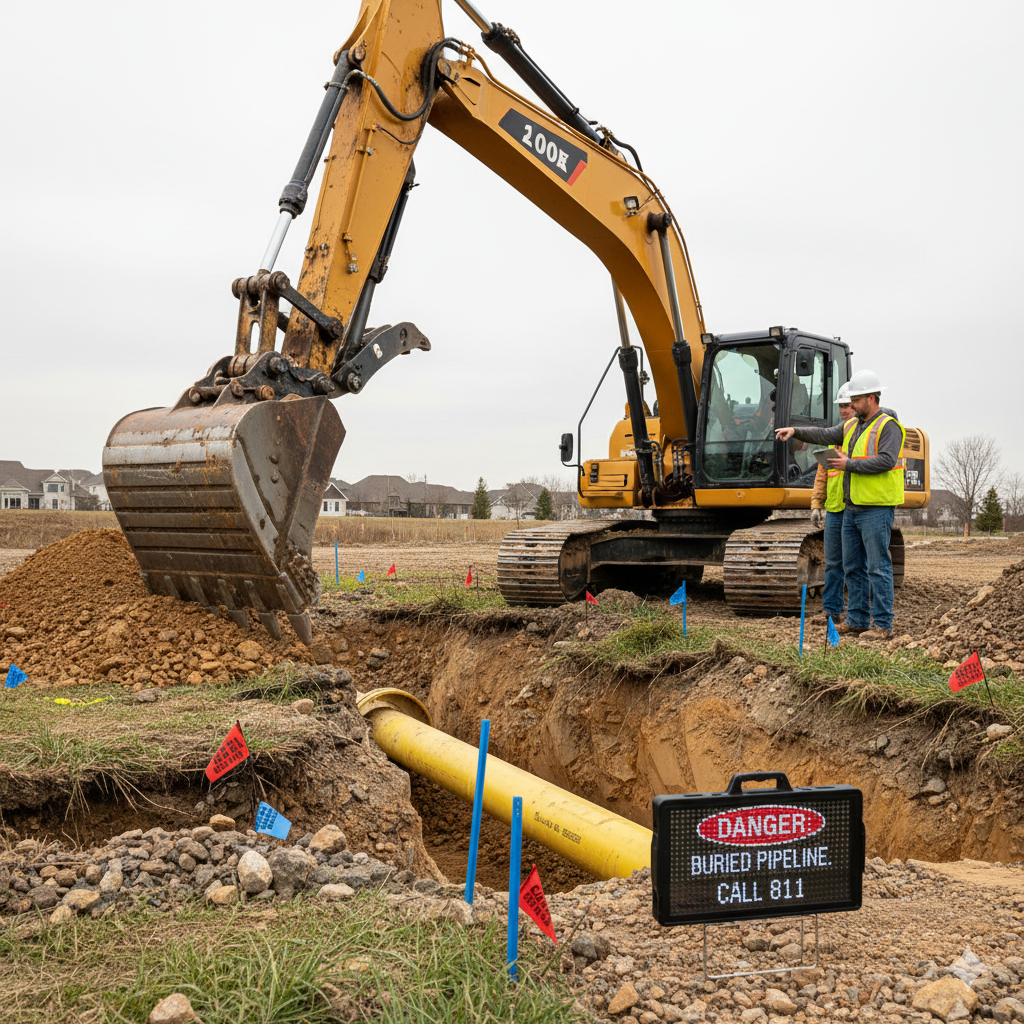The vast network of underground pipelines—carrying everything from natural gas and crude oil to refined petroleum products—is the invisible engine of modern industry. Pipeline safety is synonymous with integrity, and for decades, the single greatest external threat to that integrity has not been corrosion, fatigue, or natural disaster, but the accidental strike from a third-party excavator.
Damage caused by digging activities—whether by professional contractors or casual homeowners—is consistently cited by regulatory bodies like the Pipeline and Hazardous Materials Safety Administration (PHMSA) as the leading cause of significant pipeline incidents. These incidents result in billions of dollars in damage, costly service disruptions, severe environmental harm, and, tragically, fatalities and serious injuries within the surrounding communities.
Effective prevention of excavation damage is a shared responsibility that goes far beyond pipeline operators and relies on the participation of every community member and contractor. It is a multi-layered defense system built on public awareness, streamlined communication, and the latest monitoring technology.
The Critical First Line of Defense: Call 811
The foundation of damage prevention is the 811 “Call Before You Dig” system. This national, toll-free number connects anyone planning to excavate—from large construction companies performing roadwork to homeowners planting a tree—to a local One Call center.
The Standardized Protocol: The Safe Digging Process
The “Call Before You Dig” process transforms a potentially blind dig into a planned, risk-mitigated operation. It is mandated by law in most states and typically follows four essential steps:
- Notification: The excavator calls 811 (or submits an online request) at least 48 to 72 hours before digging begins (state laws vary). The excavator provides details on the location, size, and type of work planned.
- Operator Response: The One Call center notifies all member utility owners (pipelines, electric, water, sewer, telecommunications) who have underground facilities in the specified area.
- Location and Marking: The facility owners dispatch professional locators to the site. These crews use color-coded paint or flags to mark the approximate location of their underground facilities. Importantly, the marking does not indicate the precise location of the pipe, but rather a “tolerance zone” surrounding it.
- Safe Excavation: The excavator must respect the markings. Within the designated tolerance zone, mechanical equipment is often prohibited, requiring the excavator to proceed with hand-digging (or “potholing”) to safely expose the utility before using powered equipment nearby.
The Cost of Non-Compliance
Ignoring the 811 system is the primary reason for excavation damage incidents. The consequences for non-compliance are severe and multi-layered:
- Human Safety: The immediate threat of fire, explosion, or asphyxiation from a ruptured line.
- Legal Liability: Excavators face substantial fines, penalties, and liability for all repair and recovery costs.
- Service Disruption: Hitting a critical pipeline can interrupt natural gas service, electricity, or water supply to entire neighborhoods, often during times of peak need.
Advanced Defense: Technology and Surveillance
While the 811 system relies on human action, pipeline operators utilize technology to add layers of surveillance and protection to their rights-of-way (ROW).
| Technology/Program | Function in Damage Prevention |
| Aerial Patrols | Helicopters or fixed-wing aircraft fly weekly, or even daily, along the pipeline ROW to visually detect unauthorized vehicles, construction equipment, or digging activity before a strike occurs. |
| Satellite/Remote Sensing | Satellite imagery and drone surveillance monitor the pipeline corridor for changes in surface conditions, new construction starts, and signs of unauthorized access. |
| Acoustic and Fiber Optic Sensors | New systems utilize fiber optic cables buried alongside the pipeline to monitor acoustic and vibrational signatures 24/7. They can detect the noise of digging equipment (e.g., a backhoe or jackhammer) and provide an immediate, pinpoint alarm to the control center, allowing for proactive intervention. |
| Public Awareness Campaigns | Pipeline operators conduct continuous outreach programs in their operating areas, using public service announcements, mailers, and local media to educate homeowners, farmers, and community leaders about pipeline markers and the essential nature of the 811 call. |
Export to Sheets
The Pipeline Operator’s Integrity Commitment
Pipeline companies carry the ultimate responsibility for maintaining the integrity of their buried assets. Their approach to damage prevention must be systematic and proactive:
- Accurate Mapping: Operators must maintain and provide highly accurate, up-to-date drawings and geospatial data for their pipeline locations to the One Call center and to contractors. Inaccurate records directly contribute to poor locating and subsequent damage.
- Proactive Patrols: In addition to aerial checks, dedicated ground patrol inspectors physically monitor high-risk areas—especially known construction zones—to ensure excavators are following their permit and respecting the line markings.
- Repair and Documentation: When a line is struck, even if no immediate release occurs, the damage must be meticulously characterized and repaired. A dent or scratch that doesn’t immediately fail can become a point of weakness years later due to pressure cycling or corrosion. Proper repair, often through excision or sleeve installation, is critical to restoring long-term integrity.
Preventing third-party excavation damage is the most challenging component of pipeline safety because it depends on the actions of millions of people outside of the pipeline industry itself. By consistently promoting 811, enforcing safety regulations, and adopting cutting-edge surveillance, the industry strives to transform every digging project from a potential catastrophe into a safe, planned operation.



